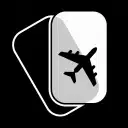Soaring High: High-Altitude Cruise Capability in Private Jets
Altitude may not sound like an important factor in your air charter experience – but it can dramatically affect the quality of your flight. Why? The flight level of your aircraft plays a role in the turbulence you experience and any inclement weather conditions you might encounter.
The Science of Altitude
To gain an understanding of the effects of varying altitude on charter flights, it’s important to grasp the relationship between the Earth’s atmosphere and your aircraft’s location. The planet is separated into five unique atmospheric layers, each filled with gas. The layer closest to the Earth’s surface – known as the troposphere – contains the weather. The troposphere starts at the ground and continues to heights of around 6,000 feet in the summer and 42,000 feet in the winter. The majority of private aircraft fly within the troposphere or in the tropopause, which is the thin layer separating the troposphere from the stratosphere. Because the troposphere houses all the planet’s weather, it’s the likeliest spot for private aircraft to encounter inclement weather and turbulence.
The Truth About Turbulence and Weather
For the most part, turbulence is simply uncomfortable and not threatening. However, if it becomes particularly rough, it may be a danger if passengers are not seated and restrained. Inclement weather, in fact, is more apt to pose a threat. Conditions such as thunderstorms and severe winds can greatly affect a charter flight’s safety. How can aircraft avoid bad weather and turbulence? The best way is to ascend to a higher (and safer) altitude as soon as possible. In many cases, commercial and private jet pilots will climb to a high altitude right after takeoff to avoid the issue. At these higher flight levels, a charter jet stays comfortably above the inclement weather conditions that the troposphere can present.
Aircraft and Altitude
However, there is one downside to flying at a high altitude: You need to charter a rather large aircraft. In general, performance of an aircraft lessens as it climbs to a higher altitude – so turboprop aircraft and light jets simply can’t operate at these heights. Mid-sized and heavy jets like the Gulfstream G550 are the only options that can ascend to 51,000 feet and stay there. The good news? You can find private aircraft that can ascend to higher altitudes much more quickly. For instance, the Lear 31 light charter jet can ascend at an impressive rate of 5,480 feet per minute. If you charter a Learjet or other fast-climbing private jet, you can minimize the time spent being jarred by turbulence and maximize the time spent cruising smoothly. The next time you charter a private jet, consider choosing an aircraft that’s capable of high-altitude cruising. At Stratos Jet Charters, we can help you arrange a flight that’s as safe and comfortable as possible. In fact, our very name was derived from the word “stratosphere” – and to this day, it represents the type of aircraft we typically charter. Stratos Jet air charter consultants have the experience necessary to organize a flight that meets your particular needs.
Are you ready to book your Boston and Seattle charter flight yet?
Our friendly, expert air charter agents are here to answer questions or start your quote today. Don`t wait, call now and we'll get you on your way to your destination!
Call 888-593-9066










